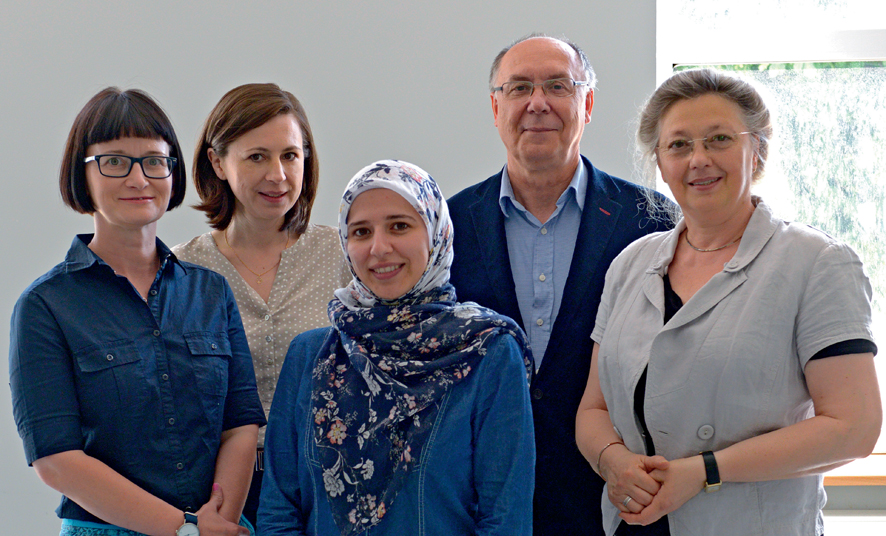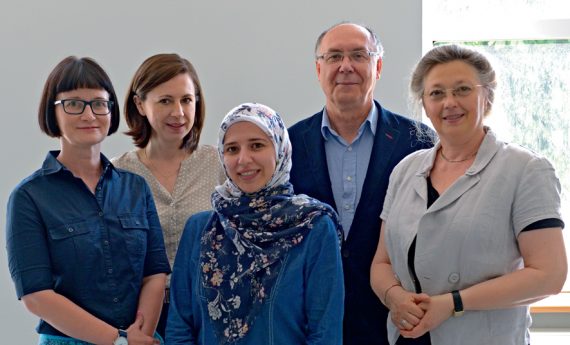- Head of laboratory
- Scientific Staff
- PhD Students
- Staff
- Research profile
- Current research activities
- Selected publications
Head of laboratory

Research profile
The overall goal of our studies is to understand the basic mechanisms of neuronal plasticity in the neuronal network responsible for locomotor control. We are also interested in the role of different neurotransmitters in the control of locomotor movements. Particularly, our research involves the functional aspects of locomotor hind limb movements after central and peripheral nervous system injury in young as well as in adult rats. The restitution of motor function related to changes in the locomotor hind limb movements and the recovery of inter-limb and intra-limb coordination after nervous system injury are investigated.
We aim to promote spinal cord recovery by:
- restitution of serotonergic innervation
- enhancing endogenous repair response and remyelination in the injured spinal cord white matter.
- identifying and applying novel factors activating the neural niche to produce new neurons
We aim to evolve new strategies for treatment of the injured spinal cord or peripheral nerves to enhance the restitution of motor function. A core feature of our research is directed towards identifying new rehabilitation methods that can stimulate the neuronal plasticity mechanisms responsible for restitution of motor functions after injury. Particularly, the effects of the rehabilitation approaches that employ intraspinal neural transplantation and various pharmacological treatments are investigated.
Current research activities
Development of a new method to enhance locomotor recovery using direct activation of serotonergic neurons transplanted into the spinal cord below the total transection in paraplegic rats (Polish NSC grant). We are investigating the use of controlled activation of DREADDs (Designed Receptors Exclusively Activated by Designer Drugs) in serotonergic neurons in the graft for the initiation of locomotion. We are striving to use chemical activation of transplanted serotonergic neurons to improve functional recovery of locomotion after spinal cord injury
The same strategy of intra-spinal grafting for enhancing locomotor recovery is used to investigate whether reestablished serotonergic innervation in the spinal cord below a total transection can promote host neurogenesis or natural axonal growth of host neural networks as found for descending serotonergic neurons in zebrafish the “NEURONICHE” (Era-Net Neuron grant). Together with the other members of the “NEURONICHE” Era-Net consortium we plan to identify the signals acting on the stem cells and use them to improve the serotonergic innervation in the injured spinal cord in the rat model of paraplegia and enhance recovery of locomotion
Selected publications
Miazga K., Fabczak H., Joachimiak E., Zawadzka M., Krzemień-Ojak Ł., Bekisz M., Bejrowska A., Jordan L.M., Sławińska U. (2018) Intraspinal Grafting of Serotonergic Neurons Modifies Expression of Genes Important for Functional Recovery in Paraplegic Rats. Neural Plast. Article ID 4232706
Cabaj A.M., Majczyński H., Couto E., Gardiner P.F., Stecina K., Sławińska U., Jordan L.M. (2017) Serotonin controls initiation of locomotion and afferent modulation of coordination via 5-HT7 receptors in adult rats. J Physiol, 595(1): 301-320.
Leszczyńska A.N., Majczyński H., Wilczyński G.M., Sławińska U., Cabaj A.M. (2015) Thoracic hemisection in rats results in initial recovery followed by a late decrement in locomotor movements, with changes in coordination correlated with serotonergic innervation of the ventral horn. PLoS One, 10(11): e0143602
Sławińska U., Miazga K., Jordan L.M. (2014) 5-HT₂ and 5-HT₇ receptor agonists facilitate plantar stepping in chronic spinal rats through actions on different populations of spinal neurons. Front Neural Circuits, 8: 95.
Sławińska U., Miazga K., Cabaj A.M., Leszczyńska A.N., Majczyński H., Nagy J.I., Jordan LM. (2013) Grafting of fetal brainstem 5-HT neurons into the sublesional spinal cord of paraplegic rats restores coordinated hindlimb locomotion. Exp Neurol, 247: 572-581.


